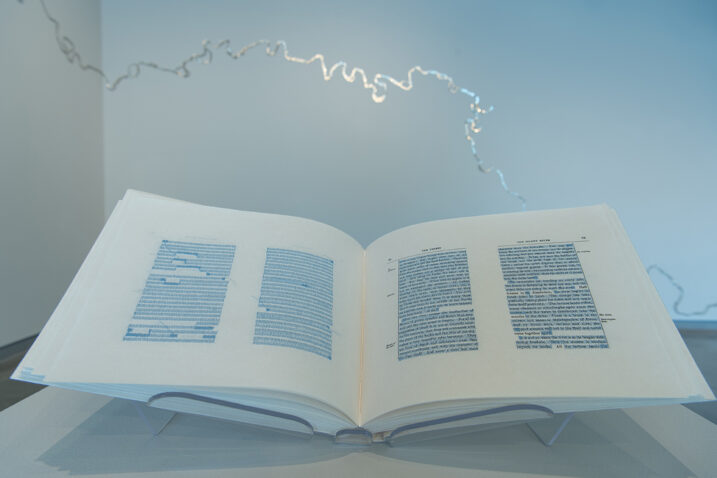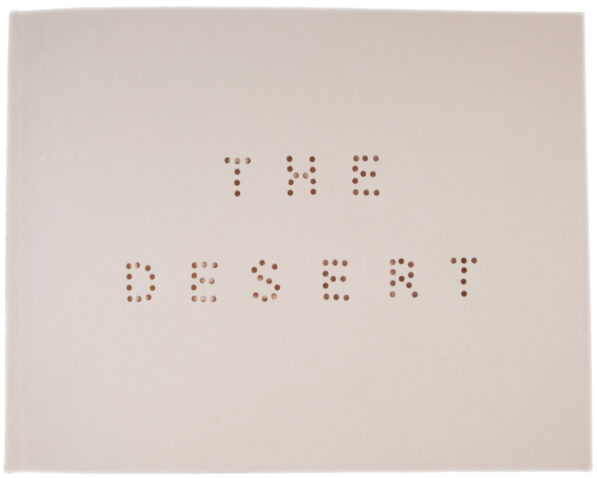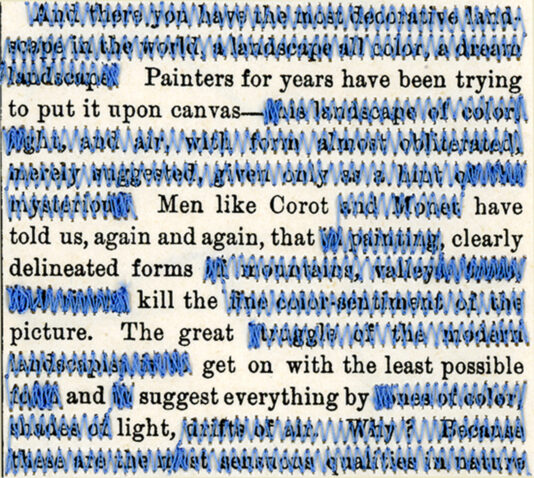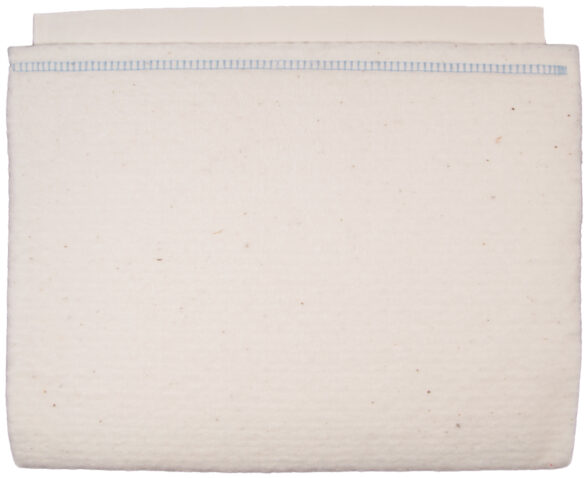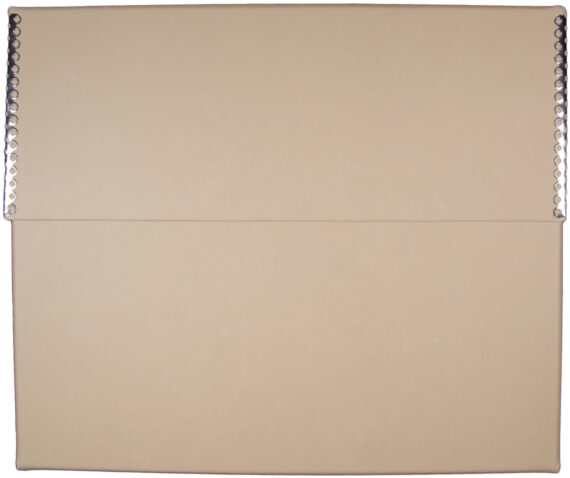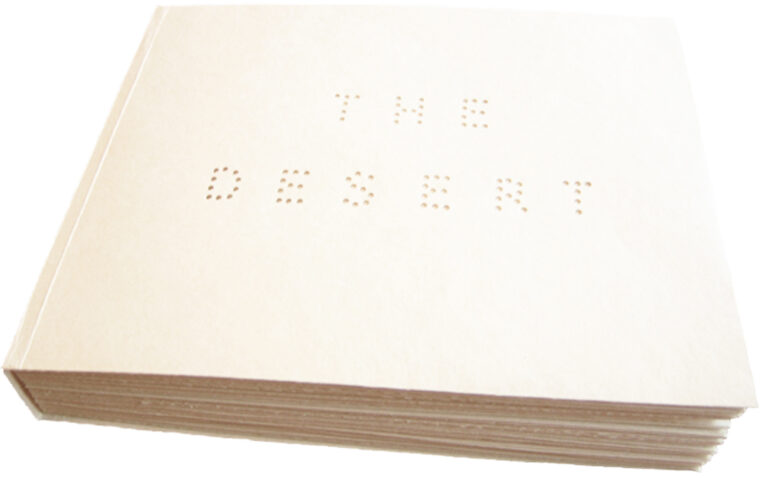The entangled poems in The Desert surface through a subtractive writing process and an additive textile process of stitching selectively through a facsimile of John Van Dyke’s The Desert (1901). I typeset Van Dyke’s facsimile page spreads landscape-orientation on the recto pages; the prose weathers an accumulation of blue zigzag stitching only partially veiling the justified text blocks. A reader seeks out the poem I have written in the small fragments of text where the blue stitching leaves off. Italicized glosses like “Solitude.” sound quietly in the margins. The verso is experienced as a kind of queer, elemental landscape where the acts of poem-making leave their record in thread. This porous process slows writing, reading, and speaks with and through materials.
One of the parameters of this book is that all drafts of the poem can only be written through the act of sewing. Another parameter: a word, if sewn through, cannot be restored to the possibilities of that page. The parameter puts pressure on reading and composing as a form of hyper-present presence, awake to simultaneous possibilities. Thinking of the artist James Turrell, for whom the poem was first composed for a reading at Roden Crater, I/we wrote: “The great get on with the least possible and suggest everything by light.”
